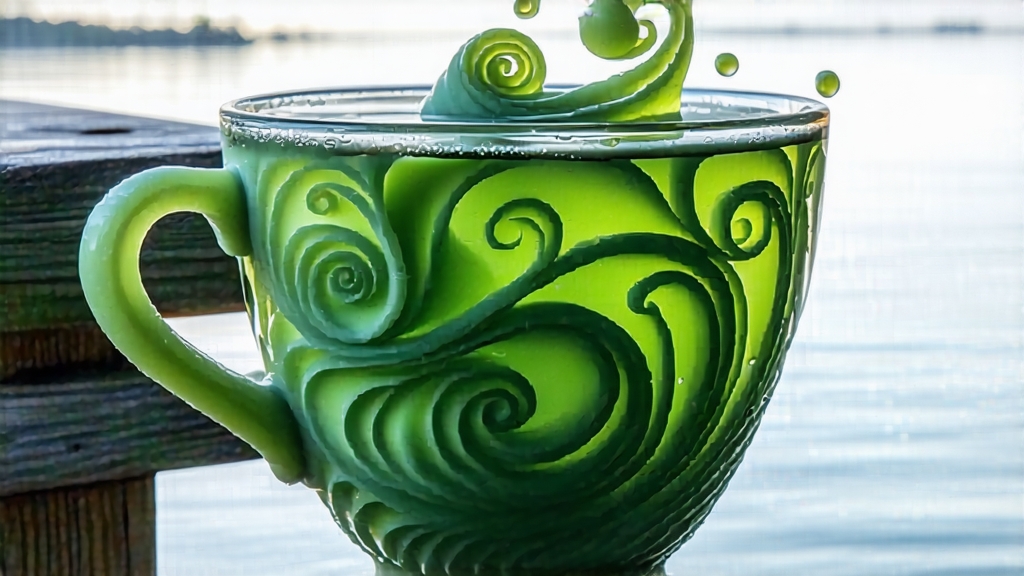
Biluochun, whose name translates literally to “Green Snail Spring,” is one of China’s ten most celebrated teas, yet it remains a quiet mystery outside the circles of serious tea lovers. Grown in the mist-locked hills that rim eastern Taihu Lake in Jiangsu Province, this emerald-green tea is prized for its tiny spiral-shaped leaves, an intoxicating orchid-and-fruit aroma, and a sweetness so clean it seems to evaporate on the tongue. To understand Biluochun is to step into a microclimate where lake fog, ancient fruit trees, and meticulous hand-craftsmanship converge; to brew it well is to coax a spring morning out of a teaspoon of fragile downy buds.
History and Legend
Although Qing-dynasty court records first name-check Biluochun in 1699, local monks insist the tea was already offering solace in hillside temples two centuries earlier. The most charming origin tale tells of a tea picker who climbed so high into the Dongting mountains that her basket overflowed. She tucked the surplus between her breasts, where body heat released an irresistible perfume. Upon reaching the village, the fragrance astonished everyone; when asked what the tea was called, she blurted out “xia sha ren xiang”—“scary fragrance.” The name was later refined by the Kangxi Emperor, who judged the original too vulgar for imperial taste and rechristened it Biluochun to honor its snail-shell shape and spring harvest window. Whatever the truth, the tea became a tribute item so coveted that pickers were required to seal each lot with wax and military escort.
Terroir: Lake, Mist, and Apricot
Biluochun is not a generic green tea; it is the distilled essence of one small terroir. The Dongting Dongshan and Xishan peninsulas rise out of Taihu like miniature fjords, trapping humid lake air that condenses into nightly fog. The mist filters sunlight into a soft, diffused glow, slowing photosynthesis and prompting the plant to stockpile amino acids—especially L-theanine, the compound responsible for brothy sweetness. Another crucial detail is intercropping: tea bushes are planted amid peach, plum, and apricot trees whose spring blossoms shower nectar into the air; the leaves absorb these airborne sugars, which is why authentic Biluochun carries a natural fruity note impossible to replicate in monoculture gardens. Soil is acidic sandy loam rich in quartz and hornblende, minerals that sharpen the tea’s bright, quartz-like finish.
Varieties: Seven Grades, One Cultivar
All true Biluochun comes from a small-leaf Camellia sinensis var. sinensis clone known locally as “Dongting Qunti.” Within that single cultivar, however, seven commercial grades exist, differentiated by picking standard and leaf-to-bud ratio.
- Supreme Jade (Qianliang Cha): one bud only, plucked before Qingming festival, 6,000 buds yield 100 g.
- Special Grade: one bud and one half-open leaf, Qingming to Guyu.
- First to Third Grades: progressively larger leafsets, picked up to early May.
- Fourth and Fifth Grades: two leaves and a bud, late May, still fragrant but lighter.
The higher grades display the famous “white down” (hao) that coats the bud like frost; when fired, the down turns silver-green and anchors the aroma. Counterfeit versions from Sichuan or Guizhou often use early-harvest mao feng leaves rolled into spirals, but they lack both the down and the lingering apricot aftertaste.
Crafting the Spiral: A Six-Hour Race Against Time
Biluochun is the earliest green tea to hit Chinese markets each year, which means plucking begins in mid-March while dawn thermometers still flirt with 5 °C. Pickers work barefoot on slick terraces, filling small bamboo trays that allow air to circulate and prevent premature oxidation. Once 250 g of raw leaf is collected, the race to the village workroom begins; enzymatic browning can start within 30 minutes.
Withering: trays rest in shaded draft corridors for 60–90 minutes, shedding surface moisture without sun exposure.
Fixation (shaqing): leaves are hand-tossed into woks heated to 180 °C for three minutes. The master’s palm tests the temperature—too hot and proteins denature, too cool and grassiness lingers.
Primary rolling: while still warm,